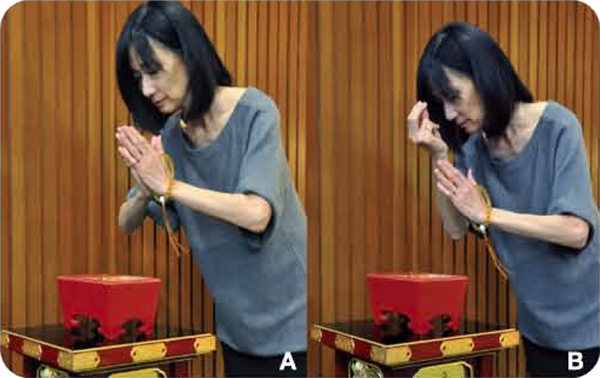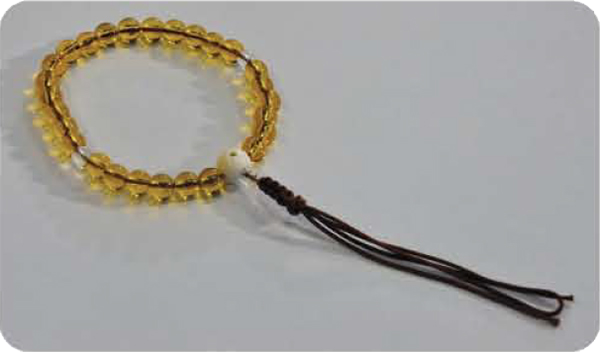Use of Cookies
Our website uses cookies to facilitate and improve your online experience.
The ceremonial forms of "gassho" and "bowing" are forms of reverence and salutation that originally came from India, the place where Shakyamuni Buddha was born. There is important meaning found within these forms.
One meaning is "prayer." There are times when we directly encounter anguish and suffering that we are unable to overcome with our own power. There are also times when we wholeheartedly wish for the happiness of others. Gassho and bowing our heads express the power of that prayer through our body and mind which we set down before the Buddha.
Another meaning of these forms is "gratitude." When we are treated kindly by another person, without thinking, we put our hands together in gassho to express our thanks. We also remember to express our gratitude to our ancestors - from whom we have received this precious life - as well as to all the other people and things that support us and make it possible for us to live our lives.
Gassho is a basic form that is made by putting the left and right palms together with the tips of the fingers held at the height of the nose.
In the Buddhist teaching, the right hand represents the world of the Buddha and the left hand represents the world of sentient beings.
Putting our hands together in gassho represents Buddha and sentient beings as one thing.
In our everyday life, we bring our hands together expressing our heartfelt prayers and gratitude. This will help us to live each single day in our finite lives more deeply.
When we come to the temple for Buddhist ceremonies and memorial services, offering fragrant incense, whether it is in powdered or stick form, purifies the mind. There is also a deep meaning within this form. By entrusting our thoughts to the incense smoke, our prayers and thoughts of loving-kindness reach the Buddha and our family ancestors. We also pray that the teaching of Buddha and the precious hearts and minds of those departed ones will pass through us just like the fragrance of incense permeates our clothing.
Generally speaking, the Sotoshu etiquette for offering incense is to offer two small pinches of powdered incense or a stick of incense in the following manner:
A. First, put your hands in gassho and bow your head. (Photo A)
B. Take a pinch of incense and with a reverent feeling, bring the incense up to your forehead.
At this time, the other hand follows along with the hand holding the incense. (Photo B)

C. Put the incense on the hot charcoal. The second pinch of incense can be placed directly on the charcoal without lifting it up.
D. Finally, put your hands in gassho and bow one more time.
A juzu (rosary) is a Dharma implement that is made of beads that are strung together with string and tied to form a circle. The source of the word "juzu" is the Sanskrit word " japa-mala." "Japa" means "to murmur" and "mala" means "circle." A juzu was used in the past as a way to count the number of times a sutra or verse had been read. The usual number of beads for a juzu is 108 which corresponds to the 108 delusions. Some juzu have 54 beads which are said to represent the stages of practice for a bodhisattva. Other juzu have 27 beads, and others have still fewer beads.

Juzu are used during Buddhist funerals and memorial services. They express the mind that is faithful to the Buddha's teachings as well as the mind that makes offerings to the deceased and our ancestors. For this reason, it is important to handle juzu with care and reverence, and not to throw them around or put them on the ground.
Juzu are usually worn on the left hand. When bowing our head or offering incense, juzu are held around the four fingers of the left hand.
Dogen Zenji, the founder of the Sotoshu in Japan, said, "Provisionally, there are two ways to study the Way of Buddha: with the body and with the mind." (Shobogenzo: "Studying the Way with Body and Mind") Regarding the etiquette when visiting the temple or at a memorial service, it is important to know the proper decorum and to practice and observe it wholeheartedly.